1. Are Zinnias Really That Easy to Grow?
Growing zinnias is often referred to as one of the simplest and most rewarding gardening experiences, especially for beginners. But is planting zinnia truly as effortless as it sounds? Let’s dig into why these vibrant flowers have gained the title of “lazy gardener’s dream.”
Why Are Zinnias Perfect for Beginners?
If you’ve ever felt overwhelmed by the thought of maintaining a flower garden, zinnias are here to change that perspective. These hardy annuals thrive with minimal effort, making planting zinnia an ideal choice for those short on time or experience.
- Ease of Growth: Zinnias are known for their fast germination and rapid growth. They can sprout within a week of planting, giving you instant satisfaction.
- Low Maintenance: Once planted, zinnias require only basic care—adequate sunlight, occasional watering, and a bit of love.
- Adaptable Nature: These flowers can grow in a wide range of climates and soils, as long as they have enough sunlight.
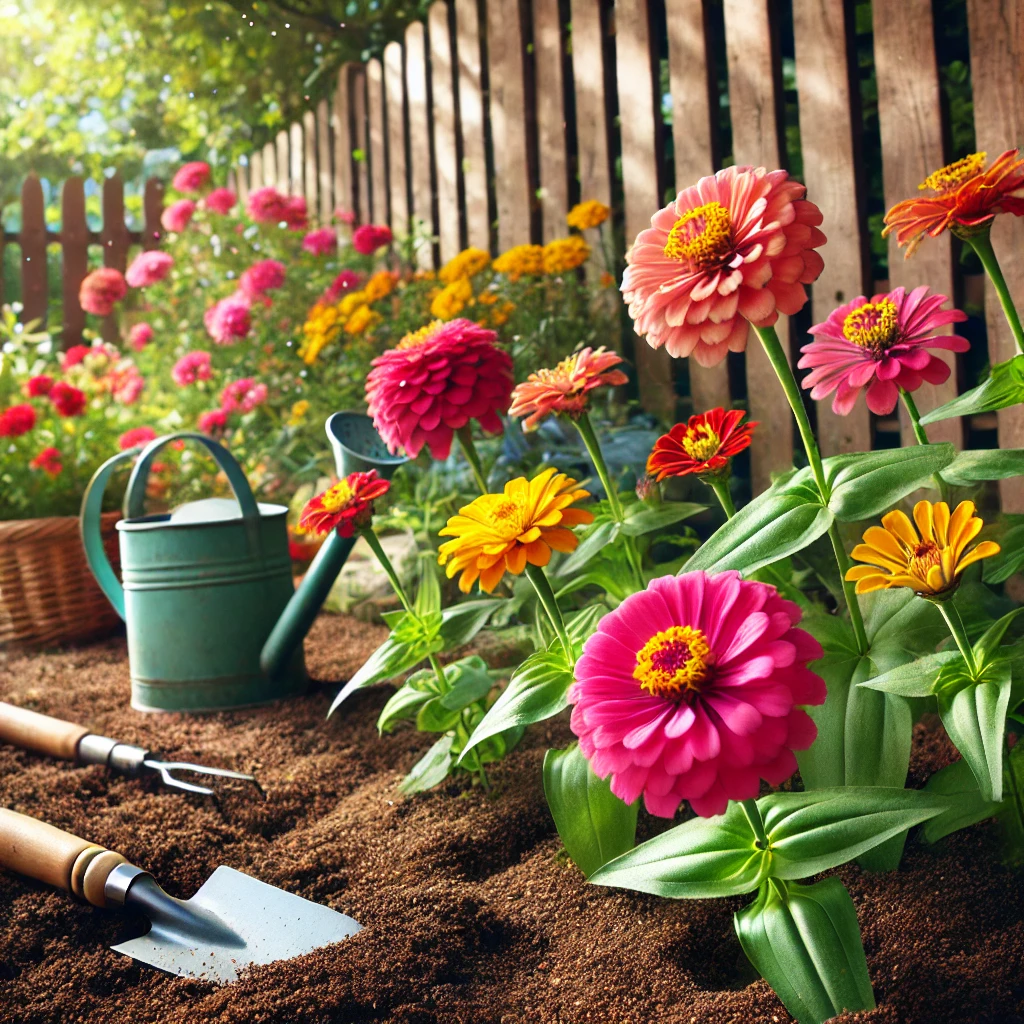
The Role of Zinnia Seeds in Effortless Gardening
The secret to their simplicity lies in the seeds themselves. Unlike many other flowers, zinnia seeds are forgiving and versatile. Here’s why:
- Direct Sowing Works Best: You don’t need special tools or techniques. Simply scatter the seeds in your garden bed, water them lightly, and let nature do the rest.
- No Transplant Shock: Unlike delicate plants, zinnias adapt quickly to their surroundings, even if you move them during early growth stages.
- High Germination Rates: With a little care, most zinnia seeds will grow into healthy plants, ensuring a vibrant garden with minimal effort.
Common Misconceptions About Planting Zinnia
Some gardeners worry that zinnias might be prone to diseases or require constant attention. However, these worries are largely unfounded.
- Pest ResistanceTop Minecraft Kitchen Island Ideas: While no plant is entirely immune, zinnias are relatively pest-resistant, especially when grown in healthy soil.
- Sunlight Needs: Some believe zinnias are finicky about sunlight, but as long as they get 6–8 hours of direct sun daily, they thrive.
- Watering Frequency: Overwatering can harm zinnias, but sticking to a moderate schedule makes care a breeze.
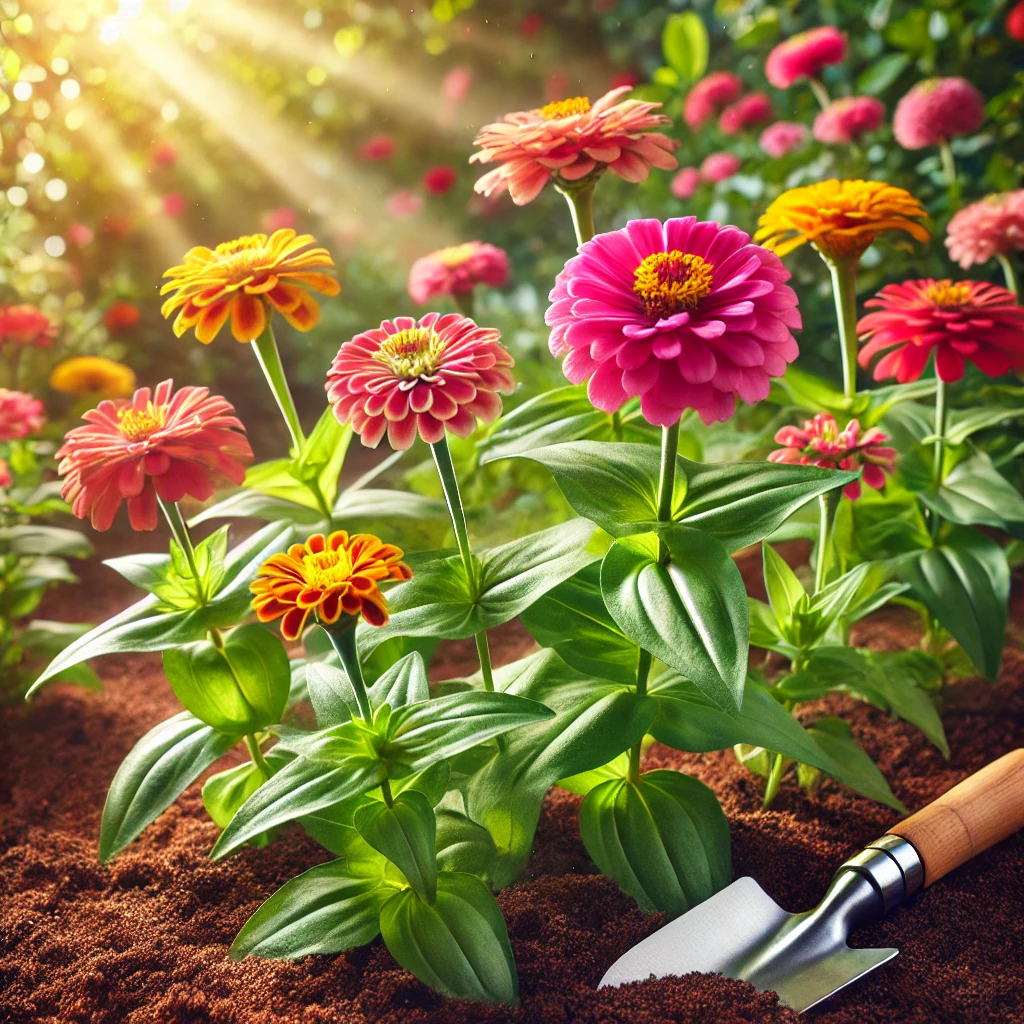
2. The Easiest Way to Start Planting Zinnia Seeds
If you’re ready to get started with planting zinnia, you’ll be glad to know that it doesn’t require any complex techniques or expensive tools. Whether you’re sowing them directly in your garden or starting seeds indoors, this guide will walk you through the easiest methods to grow vibrant zinnias effortlessly.
How to Start Zinnia Seeds Outdoors
For lazy gardeners, direct sowing is the ultimate way to grow zinnias with minimal effort. Here’s how:
- Choose the Right Spot: Look for a sunny location with well-draining soil. Zinnias love sunlight, so ensure they receive at least 6–8 hours of direct sun daily.
- Prepare the Soil: Loosen the soil using a rake or a small garden tool. Remove any weeds or debris to give your zinnia seeds a clean start.
- Sow the Seeds: Scatter the seeds across the soil surface, keeping them about 6–12 inches apart. Lightly press them into the soil but avoid burying them too deep; zinnia seeds only need about 1/4 inch of soil coverage.
- Water Gently: Use a watering can or hose with a spray attachment to moisten the soil. Keep it damp until the seeds germinate, which usually takes 5–7 days.
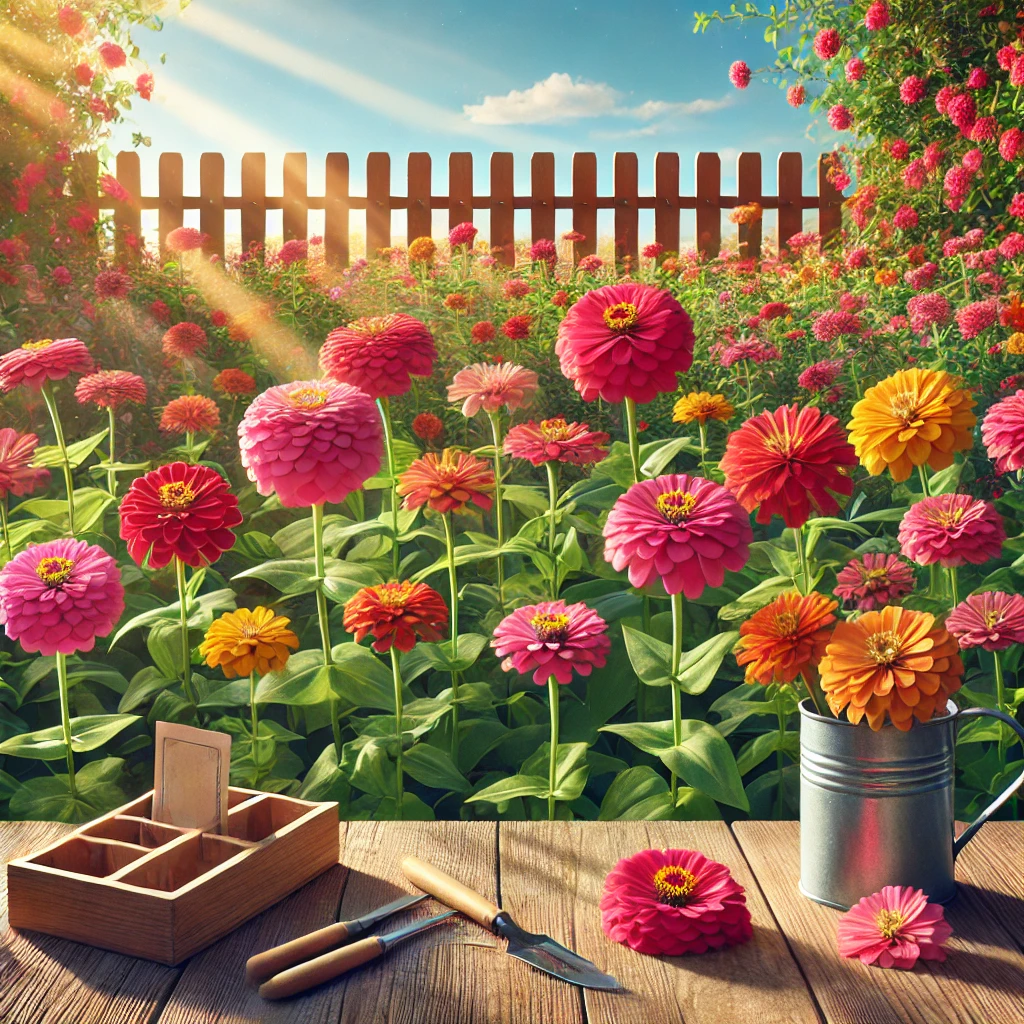
Can You Scatter Zinnia Seeds?
Absolutely! If you’re looking for the laziest way to start planting zinnia, scattering seeds is a viable option. This method is perfect for wildflower-style gardens where plants can grow naturally. Here are a few tips:
- Timing Matters: Scatter the seeds after the last frost in spring, as zinnias thrive in warm temperatures.
- Let Nature Help: Allow rain and natural soil conditions to work their magic.
- Thin Out Later: Once the seedlings emerge, thin them out to ensure each plant has enough space to grow.
Starting Zinnia Seeds Indoors
For those who prefer a head start, indoor seed starting is another simple method. While slightly more effort is involved, it ensures your zinnias are ready to bloom as soon as the weather warms up.
- Use Seed Trays or Pots: Fill them with a light, well-draining potting mix.
- Plant the Seeds: Place one or two seeds per compartment, about 1/4 inch deep.
- Provide Warmth and Light: Keep the trays in a sunny window or under grow lights. Maintain a temperature of 70–75°F for optimal germination.
- Transplant Carefully: Once the seedlings have 2–3 sets of true leaves, they can be transplanted outdoors.
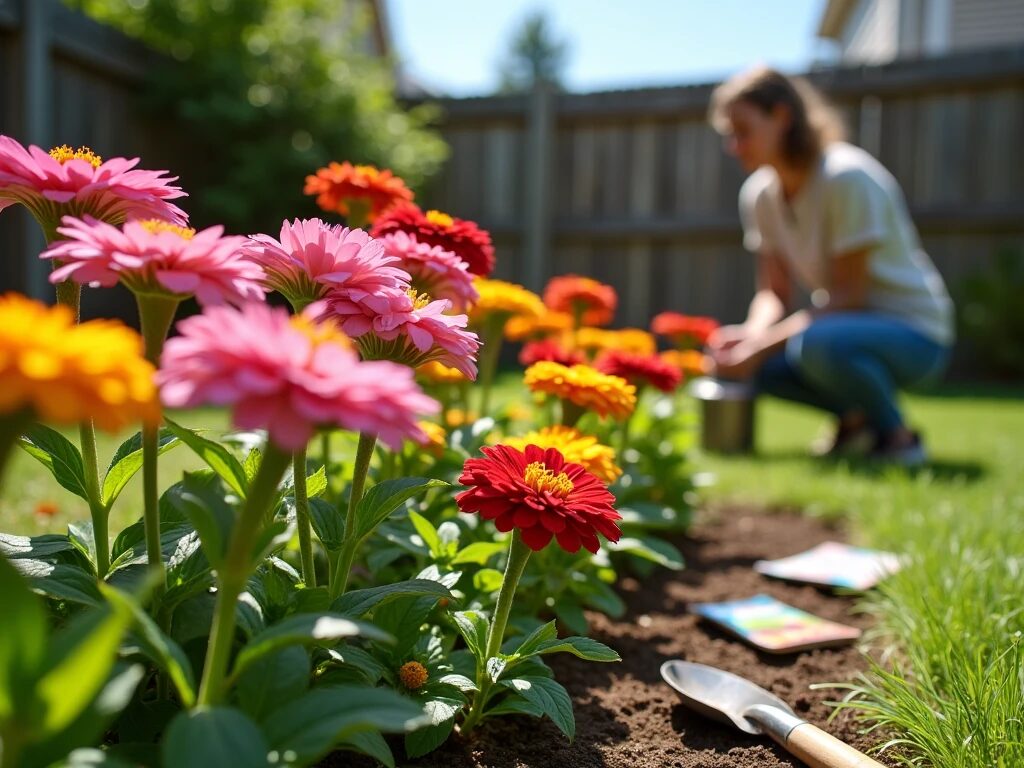
3. When and Where to Plant Zinnia Seeds
Timing and location are everything when it comes to planting zinnia seeds. Zinnias are easy to grow, but knowing the right season and environment ensures your garden flourishes with vibrant blooms. This section will guide you on choosing the perfect time and place for these stunning flowers.
Best Time for Planting Zinnia Seeds
To achieve the best results, planting zinnias at the right time is crucial.
- After the Last Frost: Zinnias thrive in warm weather, so wait until the danger of frost has passed. Cold soil can hinder seed germination and damage seedlings.
- Spring to Early Summer: The ideal time for planting zinnia seeds is from late spring to early summer, depending on your location. This gives the plants enough time to grow and bloom before the fall.
- Indoor Starting Option: If you live in a colder climate, start seeds indoors 4–6 weeks before the last frost. This ensures they are ready for transplant when the weather warms up.

Where to Plant Zinnia Seeds
Choosing the perfect spot is equally important for a successful zinnia garden.
- Full Sun is Key: Zinnias are sun lovers and need at least 6–8 hours of direct sunlight daily. Lack of sunlight can result in weak stems and fewer blooms.
- Well-Draining Soil: While zinnias can tolerate a variety of soils, they perform best in well-draining, loamy soil. Adding compost can enhance soil quality and boost growth.
- Spacing Matters: Proper spacing is vital for healthy plants. Keep at least 6–12 inches between seeds to allow for air circulation and prevent diseases.
- Avoid Crowded Areas: Zinnias need breathing room to grow tall and bloom profusely. Crowded spaces can lead to mildew and other issues.
Can Zinnias Grow in Containers?
If garden space is limited, zinnias can be successfully grown in pots or containers.
- Container Size: Choose a pot at least 12 inches wide and deep to accommodate the roots.
- Sunlight Access: Place the container in a sunny spot, such as a balcony or patio.
- Soil Mix: Use a lightweight potting mix with good drainage to ensure the plants thrive.
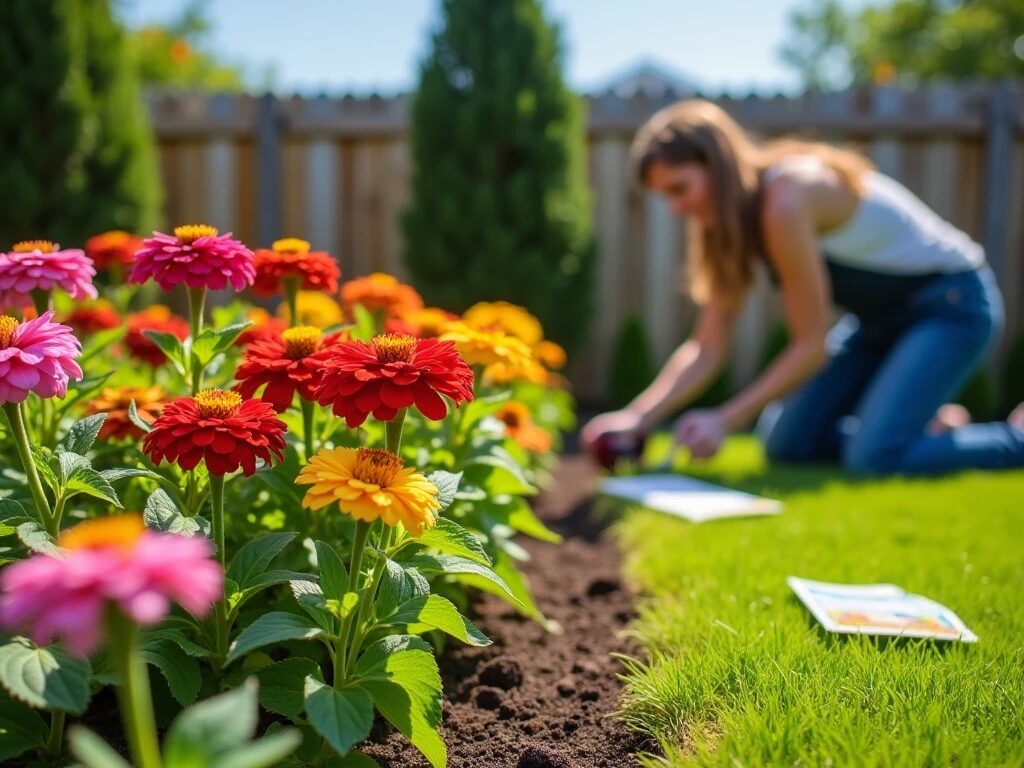
4. Caring for Your Zinnias and Ensuring Continuous Blooms
Once you’ve mastered the art of planting zinnia, the next step is learning how to care for them to ensure they thrive and bloom throughout the season. While zinnias are low-maintenance flowers, a few simple tips can help you achieve stunning results.
Watering Tips for Healthy Zinnias
Zinnias don’t demand constant watering, but proper hydration is essential for their growth.
- Moderate Watering: Water your zinnias about 1–2 times a week, depending on the weather. Ensure the soil stays slightly moist but never waterlogged.
- Morning Schedule: Watering early in the day allows the soil to dry before evening, reducing the risk of mildew.
- Avoid Overwatering: Overwatering can lead to root rot and fungal diseases. Always check the soil before adding water.

Fertilizing Zinnias for Optimal Growth
Though zinnias are resilient, a little fertilization can boost their bloom production.
- Start with Compost: Before planting zinnia, mix organic compost into the soil for added nutrients.
- Balanced Fertilizers: Use a balanced 10-10-10 fertilizer every 4–6 weeks during the growing season to encourage healthy blooms.
- Avoid Over-fertilizing: Too much fertilizer can cause excessive foliage growth at the expense of flowers.
Deadheading and Pruning for Continuous Blooms
One of the secrets to keeping your zinnias blooming is regular deadheading and light pruning.
- Deadheading: Remove faded or dead flowers to redirect the plant’s energy into producing new blooms.
- Pruning Tips: If your zinnias grow too tall or leggy, trim them back slightly to encourage bushier growth.
- Harvesting Blooms: Cutting flowers for bouquets not only beautifies your home but also promotes regrowth.
Protecting Zinnias from Pests and Diseases
While zinnias are generally hardy, pests and diseases can sometimes affect their health.
- Common Pests: Keep an eye out for aphids, spider mites, and whiteflies. Use insecticidal soap or neem oil to manage infestations.
- Powdery Mildew Prevention: Ensure good air circulation around your plants by spacing them properly during planting zinnia.
- Healthy Practices: Avoid overhead watering and remove any diseased foliage promptly to prevent spreading.
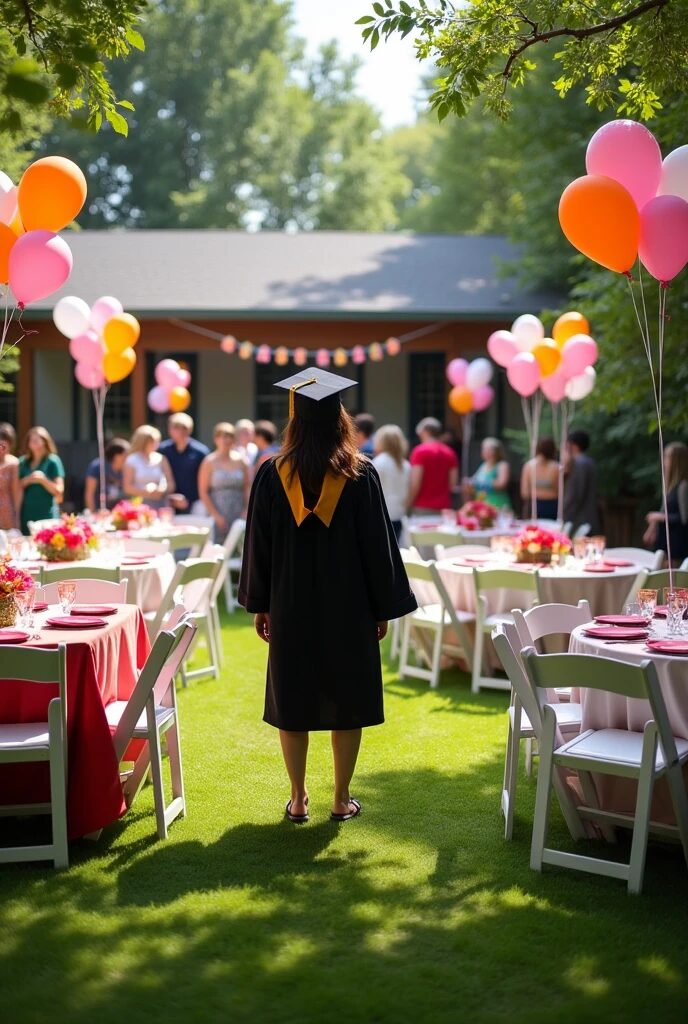
Conclusion
Caring for your zinnias is as easy as planting zinnia seeds. With proper watering, fertilization, and regular maintenance like deadheading and pruning, you can enjoy a vibrant garden full of continuous blooms. Whether you’re growing them for their beauty or for delightful cut flowers, zinnias are sure to bring joy to your gardening experience.
In conclusion, zinnias truly live up to their reputation as one of the easiest flowers to grow. Whether you’re a seasoned gardener or trying your hand at planting zinnia for the first time, these blooms promise a rewarding experience. Their forgiving nature, adaptability, and stunning colors make them a top choice for anyone looking to add life to their garden with minimal effort.
Starting with planting zinnia seeds is incredibly simple, whether you opt for direct sowing, scattering, or indoor seed starting. With minimal effort and a few basic steps, you’ll soon enjoy a garden filled with colorful and cheerful zinnias. No matter which method you choose, the rewards are well worth it!
Knowing when and where to plant zinnia seeds makes all the difference in creating a lush, colorful garden. By picking the right season and ensuring ideal conditions like full sun and well-draining soil, you can enjoy a thriving display of zinnias with minimal effort. Whether you’re growing them in a garden bed or a container, zinnias are bound to brighten your space.
Frequently Asked Questions (FAQs) About Planting Zinnia
When is the best time to start planting zinnia seeds?
The best time to start planting zinnia seeds is after the last frost of spring. Zinnias thrive in warm weather, so waiting until temperatures are consistently above 60°F (15°C) ensures better germination. You can also start seeds indoors about 4-6 weeks before the last frost for an early start.
How deep should I plant zinnia seeds?
When planting zinnia seeds, make sure they are sown about 1/4 inch deep in the soil. This shallow planting depth helps ensure that the seeds get enough light for germination while still being covered enough for protection.
Can I plant zinnias in pots or containers?
Yes, zinnias can grow beautifully in containers. When planting zinnia in pots, use a container that is at least 12 inches wide and deep. Ensure it has drainage holes and use a light, well-draining potting mix. Place your container in a sunny spot for the best results.
Do zinnias require a lot of care after planting?
No, zinnias are quite low-maintenance once established. After planting zinnia, they need regular watering (but not overwatering), occasional feeding with a balanced fertilizer, and deadheading to encourage continuous blooms. They are relatively pest-resistant but should be monitored for common garden pests.
Will zinnias bloom the first year after planting?
Yes, zinnias are fast-growing annuals and will bloom in the first year after planting zinnia seeds. If planted early enough in the season, you can expect vibrant flowers within 8-10 weeks of sowing seeds.
How can I ensure my zinnias bloom throughout the summer?
To ensure continuous blooming, deadhead spent flowers regularly to promote new growth. Also, consider planting zinnia in an area that gets at least 6–8 hours of full sunlight daily. Providing consistent water and occasional feeding with a balanced fertilizer will help keep the blooms coming all season long.
Can zinnias be grown in partial shade?
While zinnias prefer full sun, they can tolerate some partial shade, especially in hotter climates. However, if you are planting zinnia in a shaded spot, expect fewer blooms, and the plants may become leggy due to the lack of sufficient sunlight.
How can I protect my zinnias from pests?
Zinnias are generally pest-resistant, but common pests like aphids, spider mites, and whiteflies may still appear. Regularly inspect your plants for signs of infestation and use organic methods such as neem oil or insecticidal soap to treat them. Keeping your plants healthy and ensuring proper air circulation can also help minimize pest problems.
Can I save zinnia seeds for next season?
Yes, you can save seeds from your zinnias for next year. After the blooms fade and dry, collect the seeds from the flower heads and store them in a cool, dry place. When it’s time to plant again, you’ll have your very own supply of seeds ready for the next season of planting zinnia.

